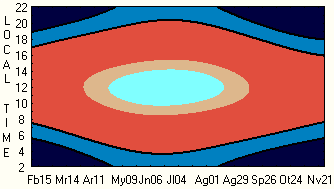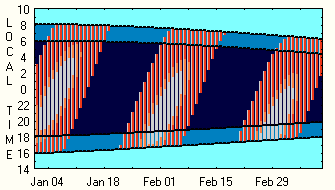|
|
|||

|
Rainbow visibility for London over much of the year. The light blue area in the centre is when the sun is too high for a natural rainbow. This situation lasts for several hours a day during the summer months. For more details on producing this diagram click here |
||

|
The rapidly changing position of the moon produces a much more complicated pattern of visibility for moonbows. The sky also has to be dark enough of course, deep blue on the diagram. Generally the moon is only bright enough when nearly full, and showers often die out in the evening further reducing the chances of seeing a moonbow. For more details on producing this diagram click here |
||
|
|
|||







